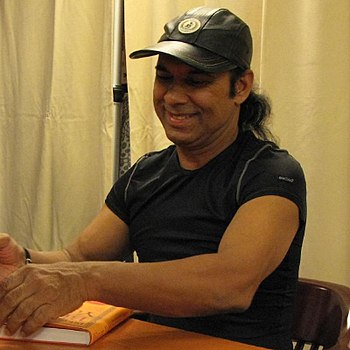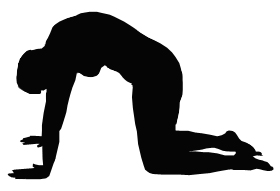Bikram Yoga is widely known as the hot yoga. It was also called the Bikram Method Yoga. As a matter of fact Bikram Choudhury was the founder of Bikram Yoga, but with time numerous wrong styles of spelling bikram yoga got to be used: bickram yoga, bikhram yoga, bikrahm yoga, bikrham yoga, bikrum yoga.
 |
Bikram Choudhury at a book signing.
Bikram Choudhury (born 1946) is a multi-millionaire
Indian yoga guru and the founder of Bikram Yoga, (
Photo credit: Wikipedia)
|
It was Bikram Choudhury, that gave yoga solutions to some of modern medical problems. He was the founder and a yoga practician. He evolved Bikram Yoga after he had an injury in a weightlifting accident. He was so tenacious that he had picked up some healing benefits in using some yoga exercises. A lot of people have evidenced the benefits of Bikram Yoga so the exercise was communicated and numerous people proceeded to practice it. There are some people who do not believe in the benefits of Bikram Yoga. Bikram Choudhury developed Bikram Yoga with the assistance of some scientists. While Bikram was on his research at Tokyo University, he brought out that the healing operation takes place when all the body systems are serving well, are conditioned and robust. If the body is weak, employing the yoga practice and healing method will be difficult to obtain.
The scientists from the University of Tokyo University Hospital showed that Bikram Yoga has medical benefits. Some of its benefits include the reviving of tissues and helps in curing chronic ailments. The findings and benefits were submitted at the International Medical Conference in the year 1972. It was expressed that Bikram Yoga has the aptitude to shape the body internally.
Bikram has come up with twenty-six posture exercises which are to be applied every day. In doing so, treatment in the body can be easily obtained. Bikram or hot yoga is a series of yoga poses done in a heated room, which is usually preserved at a temperature of 105 degrees Fahrenheit. Some poses are collected with the combination of the western and eastern disciplines in Yoga which focuses on the stretching of the muscles, tendons, organs, nerves, glands and ligaments.
So, there are many reasons why you should exercise Bikram Yoga. The rewards of Bikram Yoga can completely modify your life. It's amazing how Yoga can trigger off your life and shift your positions.
In order to be successful with the healing process of Bikram Yoga, you require attachment in doing it. The positions and hot air replenishes the cells with flushing toxins in our body. It also oxygenates blood throughout our body maintaining it clean and healthy.
Anyone who wishes to do yoga can use Bikram Yoga. It chooses no age at all. This type of yoga works with balancing, stretching and creating pressure which is all done at a same time to keep a good blood flow to all the parts of the body. So next time when you don’t know if it is bickram yoga, bikhram yoga, bikrahm yoga, bikrham yoga, or bikrum yoga, just say hot yoga.
Article Directory: Article Dashboard |


